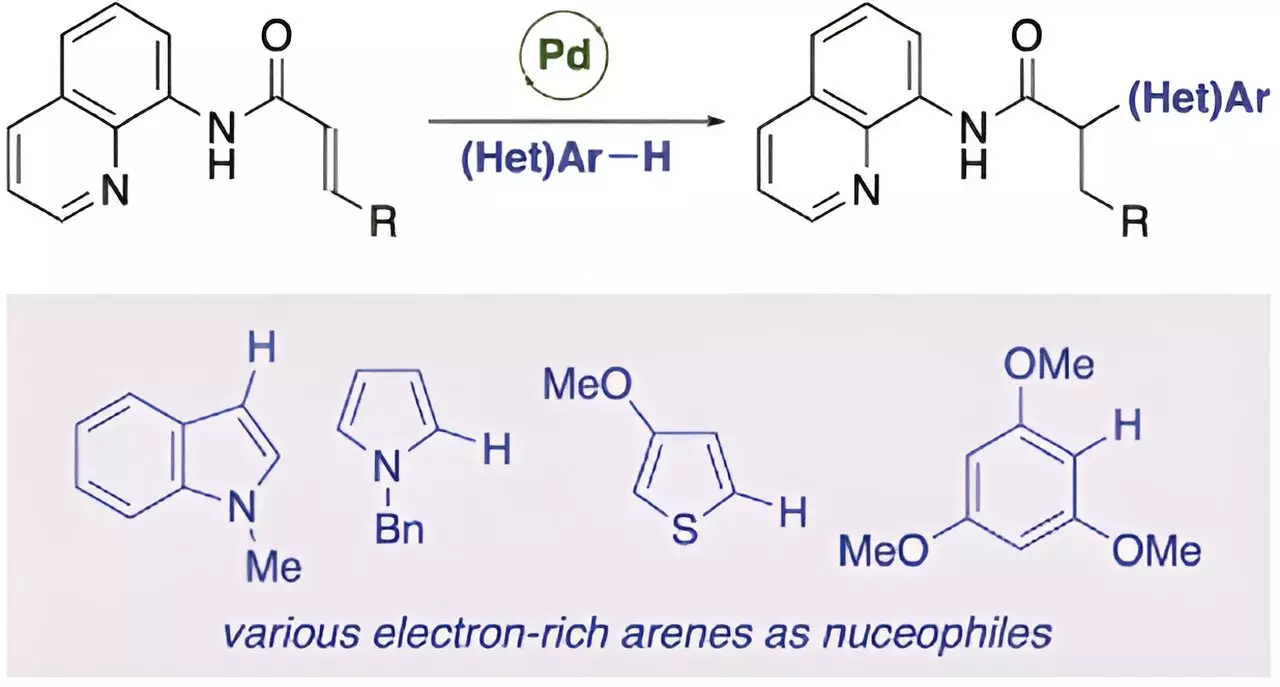The field of organic chemistry has been revolutionized by the discovery of the Michael addition reaction in 1887. This reaction has been extensively studied and applied in various synthetic processes. However, the anti-Michael addition reaction, which involves nucleophilic addition to the α-position of α,β- unsaturated carbonyl compounds, has been challenging due to the higher electrophilicity at the β-position. Researchers have made several attempts to overcome these difficulties, but no ideal method has been developed until now.
In a groundbreaking study led by Professor Takanori Matsuda and his team from Tokyo University of Science, Japan, a palladium-catalyzed anti-Michael addition reaction of acrylamides was successfully achieved. This achievement represents the first example of an anti-Michael type addition reaction, opening up new possibilities in organic synthesis.
The Methodology
The research team introduced a directing group into the α,β-unsaturated carbonyl compound to stabilize the reaction intermediate and facilitate the anti-Michael type addition reaction. By using acrylamide with an aminoquinoline-directing group and a nucleophile, the researchers were able to achieve the desired product with a high yield of 90%. The reaction proved to be practical on a larger scale, with no yield loss at 2 millimoles.
Scope of the Reaction
The palladium-catalyzed anti-Michael addition reaction was further tested with β-substituted cinnamamide derivatives, crotonamide derivatives, and a wide range of nucleophiles including various indoles, heterocyclic compounds, and electron-rich aromatic compounds. The aminoquinoline-directing group used in the reaction was found to be versatile, as it could be converted into carboxylic acids and other amides.
Mechanism of the Reaction
Through labeling experiments, the researchers unveiled the mechanism of the reaction, which involves the coordination of acrylamide to palladium(II) trifluoroacetate to form a five-membered ring palladacycle intermediate. This intermediate undergoes nucleophilic attack by the indole, producing alkylpalladium species, followed by the removal of palladium and regeneration of Pd(TFA)2 to yield the desired α-substituted carbonyl compound.
Dr. Hirotsugu Suzuki highlighted the potential applications of the anti-Michael addition reaction in the synthesis of α-substituted carbonyl compounds, which are widely used in pharmaceuticals. The one-step reaction with 100% atomic efficiency could lead to the efficient and sustainable synthesis of organic compounds, including pharmaceuticals.
The recent breakthrough in the palladium-catalyzed anti-Michael addition reaction represents a significant advancement in organic chemistry. This novel method opens up new possibilities for the synthesis of complex molecules and pharmaceuticals, highlighting the importance of continuous research and innovation in the field of organic synthesis.


Leave a Reply